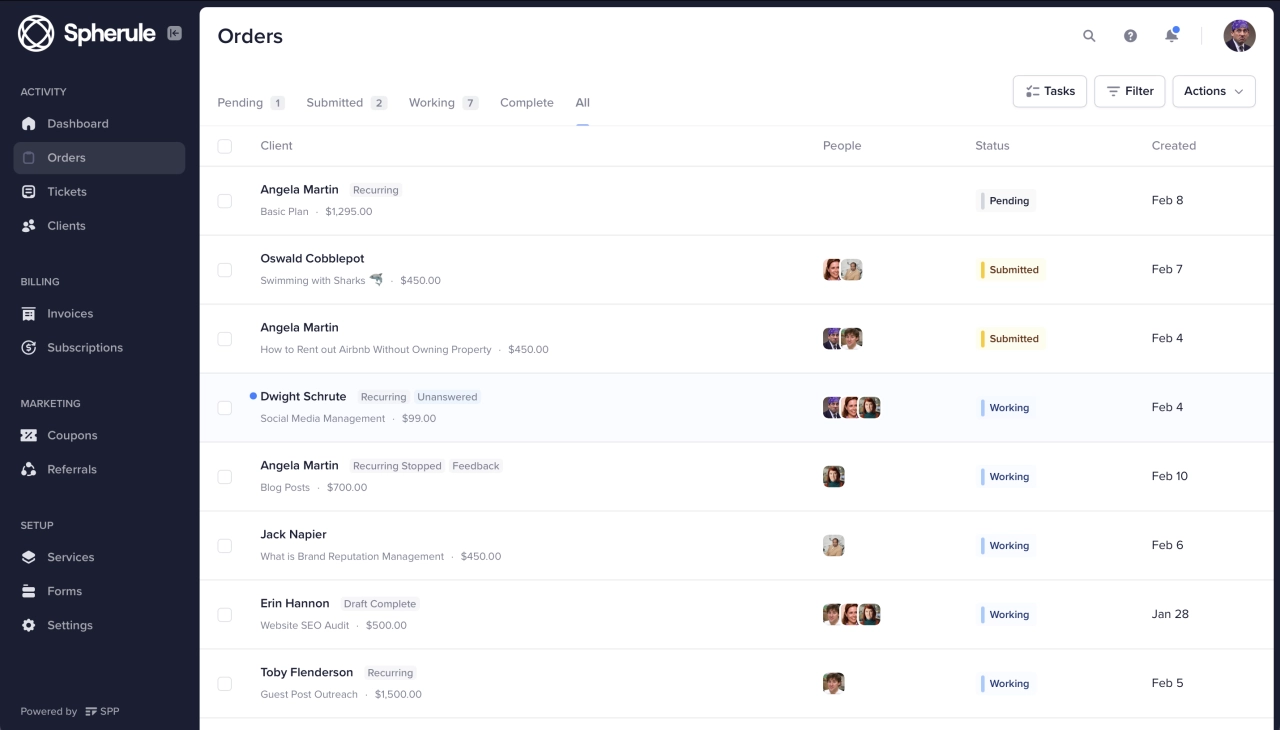Client Lifetime Value Calculator for Agencies
Determine the true value of your clients over the entire relationship
Client Revenue Information
Service & Acquisition Costs
Or enter specific costs below
Additional Value Factors
For time value of money calculations
Client Lifetime Value
Total Lifetime Profit
CAC Payback Period
Max Viable Acquisition Cost
Revenue & Cost Breakdown
Value Over Time
Strategic Insights
Impact of Variable Changes
This chart shows how changes to key variables would impact the total Client Lifetime Value.
Frequently Asked Questions
- What is Client Lifetime Value (LTV)?
-
Client Lifetime Value (LTV) is the total financial worth of a client to your agency over the entire duration of your relationship. Unlike simple revenue calculations, LTV factors in costs, profit margins, client retention rates , and even indirect value like referrals. It helps you understand which clients are most valuable to your business and how much you can afford to spend to acquire similar clients.
- How does this calculator handle different client types?
-
The calculator accommodates three common agency client types:
- Retainer Clients: Monthly recurring revenue is tracked over the expected relationship length.
- Project-Based Clients: One-time project values are averaged and converted to monthly revenue based on your typical project frequency.
- Hybrid Clients: Both retainer and project revenue streams are combined to calculate total client value.
For each type, the calculator applies the appropriate calculations to determine accurate present and future value projections.
- How are costs factored into the calculations?
-
The calculator accounts for several types of costs that impact the true profitability of a client:
- Acquisition Costs: One-time expenses to gain the client (marketing, sales, etc.)
- Onboarding Costs: Initial setup and integration expenses
- Service Delivery Costs: Ongoing costs to fulfill the client's needs (calculated using either your profit margin or specific monthly costs)
- Retention Costs: Expenses required to maintain the relationship (calculated as a percentage of revenue)
These costs are subtracted from revenue to determine the true profit from each client over time.
- What is churn and how does it affect lifetime value?
-
Churn represents the probability that a client will end their relationship with your agency within a given timeframe. It's a critical factor in LTV calculations because:
- High churn drastically reduces the expected lifetime value of clients
- Future revenue becomes less certain as the time horizon extends
- It compounds over time, creating an increasingly significant impact
This calculator converts your annual churn rate to a monthly rate and applies it progressively to each month in the projection. This gives a more realistic picture than simply assuming all clients remain for the full relationship length.
- How are referrals incorporated into the LTV?
-
Referrals are a critical but often overlooked component of client value. This calculator accounts for referrals by:
- Taking your specified referral probability (likelihood of receiving a referral in a given year)
- Applying that probability at yearly intervals in the relationship
- Calculating the expected value of those referrals based on your average referral value
- Adjusting the referral value by your profit margin to determine its contribution to your bottom line
This approach captures the "network effect" that high-value clients can have on your business beyond their direct spending with you.
- What is the discount rate and time value of money?
-
The discount rate accounts for the time value of money – the principle that money available today is worth more than the same amount in the future due to its potential earning capacity.
In this calculator, the discount rate:
- Reduces the value of future profits based on when they're expected to occur
- Provides a more realistic picture of present value
- Helps account for inflation and opportunity cost
- Makes longer-term projections more conservative
A higher discount rate makes future earnings less valuable in today's terms, while a lower rate makes future earnings closer to their nominal value.
- What's the significance of the LTV:CAC ratio?
-
The LTV:CAC ratio compares your Client Lifetime Value to your Customer Acquisition Cost. It's a crucial metric for sustainable growth because:
- Ratio < 1:1: You're losing money on each client (unsustainable)
- Ratio 1:1 to 3:1: You're profitable but may struggle to scale
- Ratio 3:1 to 5:1: Healthy business model with room for growth
- Ratio > 5:1: Excellent unit economics; potential to invest more in acquisition
The calculator uses this ratio to help you determine if your acquisition costs are justified by the long-term value of your clients . It also calculates the maximum viable acquisition cost based on a target 3:1 ratio.
- How can I use these insights to improve my business?
-
The insights provided by this calculator can inform several strategic decisions:
- Client Acquisition: Determine how much you can afford to spend to acquire new clients
- Pricing Strategy : Adjust your rates based on true client value, not just service costs
- Retention Focus: Quantify the value of reducing churn and retaining clients longer
- Client Selection : Identify which client types provide the most long-term value
- Service Mix: Evaluate whether to focus on retainer, project, or hybrid models
- Referral Programs: Calculate the appropriate incentives for client referrals
The sensitivity analysis also helps you identify which areas of improvement would have the biggest impact on your bottom line.

You're in good company. We've helped agencies like yours sell $500M+ in services.


